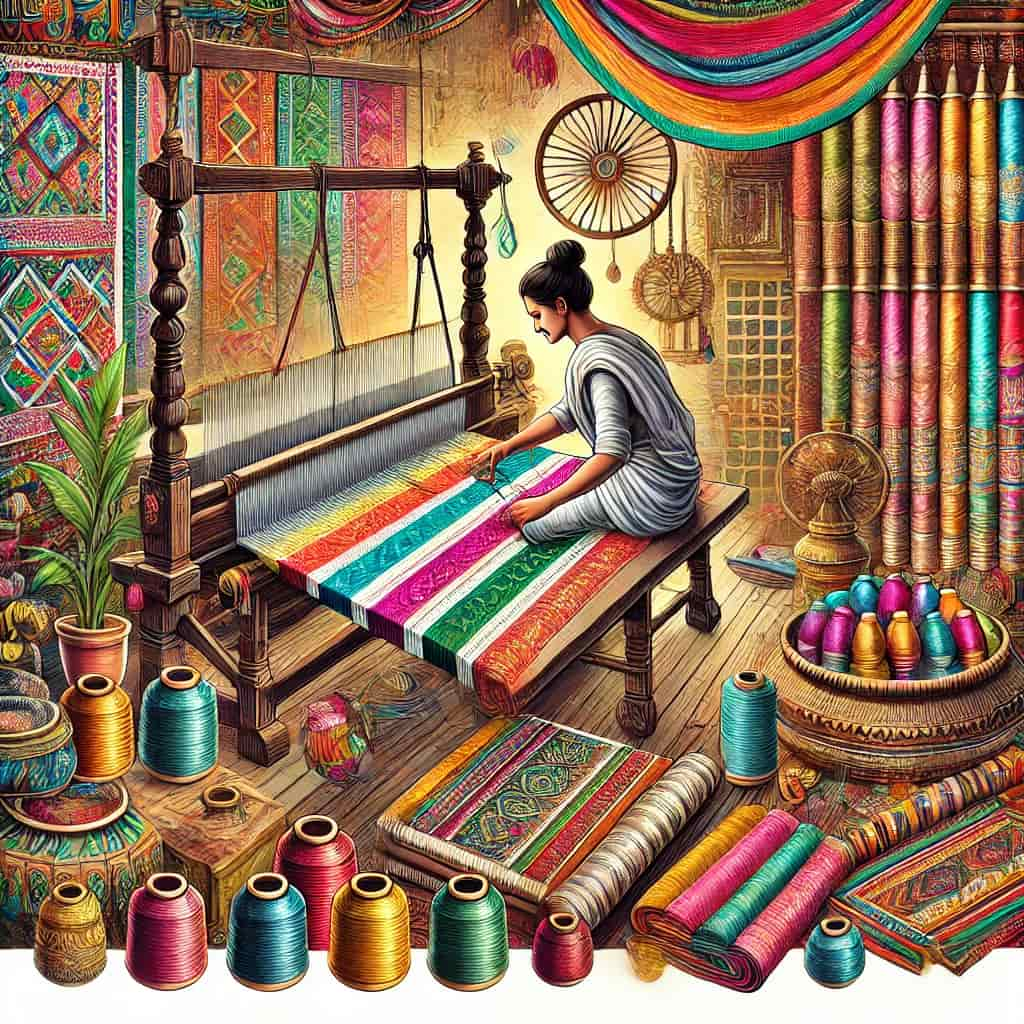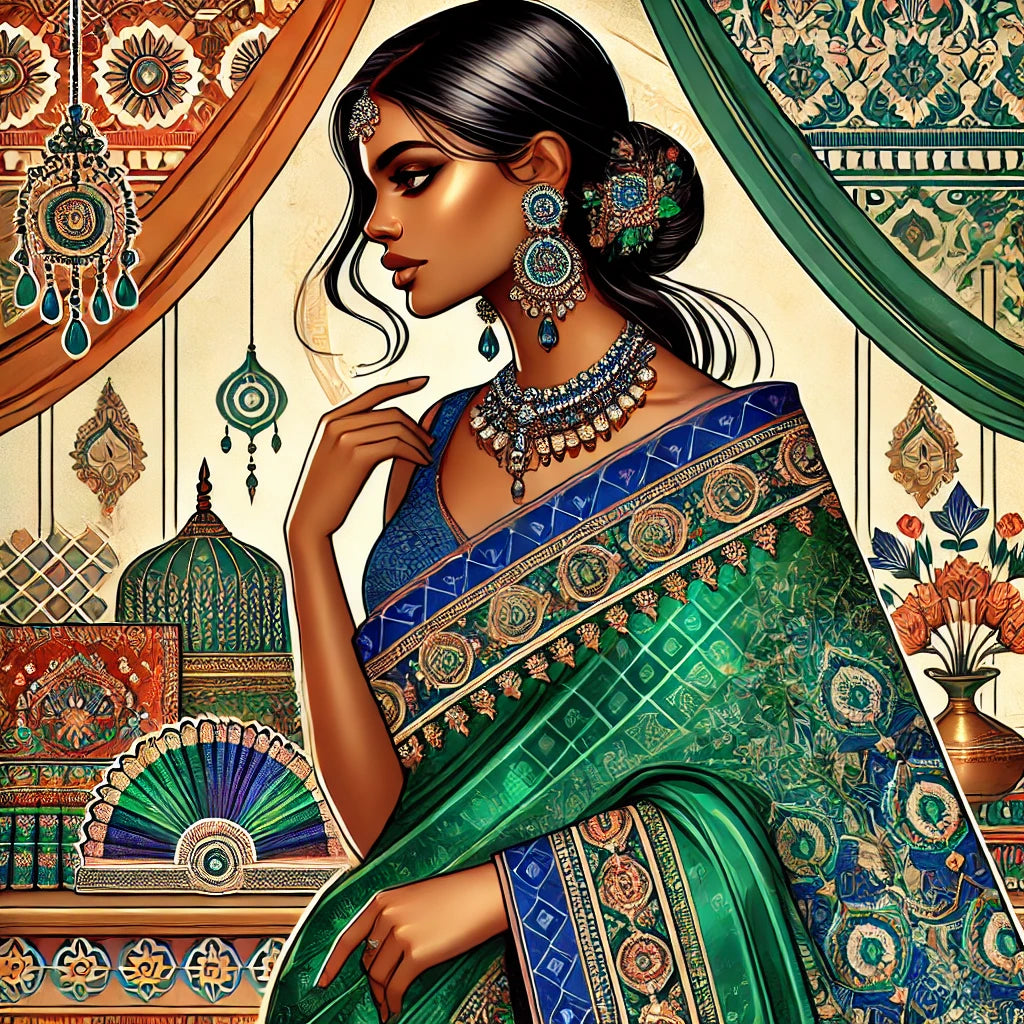
The Art of Saree Weaving: A Journey Through Tradition and Craftsmanship
Saree weaving is an age-old art form that has been cherished in India for centuries. Each region of India has its unique weaving techniques, patterns, and designs, making sarees an integral part of the country's cultural heritage. In this comprehensive blog, we will explore the intricate process of saree weaving, the different types of sarees, their regional significance, and how this craft continues to evolve in modern times.
Introduction to Saree Weaving
Saree weaving is more than just a method of creating fabric; it is a blend of tradition, artistry, and heritage. This craft involves a meticulous process where skilled artisans transform raw materials into exquisite pieces of clothing. The journey of a saree from threads to a finished garment is a testament to the weaver's expertise and dedication.
The Process of Saree Weaving
-
Selecting the Yarn: The process begins with choosing the right type of yarn. Natural fibers like cotton, silk, and wool are commonly used. The choice of yarn depends on the type of saree being woven and its intended use.
-
Dyeing the Yarn: Once the yarn is selected, it is dyed using natural or synthetic dyes. The colors are chosen based on traditional patterns, regional preferences, and contemporary trends. The dyeing process ensures that the colors are vibrant and long-lasting.
-
Warping: Warping involves arranging the yarns in parallel to form the warp, which is then wound onto a warp beam. This step is crucial as it sets the foundation for the saree's length and width.
-
Weaving: The actual weaving is done on a loom. Handlooms and power looms are commonly used. The weaver interlaces the weft yarns through the warp yarns to create the fabric. This process requires precision and skill to ensure uniformity and intricate patterns.
-
Designing and Patterning: Patterns are created using various techniques such as jacquard, dobby, and ikat. These designs can range from simple motifs to complex patterns. Each region has its distinct style, like the geometric patterns of the Patola saree or the floral designs of the Banarasi saree.
-
Finishing: After weaving, the saree undergoes finishing processes like washing, stretching, and ironing to enhance its texture and appearance. Embellishments like zari (gold or silver thread) work, embroidery, and sequins may also be added.
Types of Sarees and Regional Significance
-
Kanjivaram Sarees (Tamil Nadu): Known for their rich silk fabric and intricate gold patterns, Kanjivaram sarees are a symbol of South Indian culture. They are often worn during weddings and special occasions.
-
Banarasi Sarees (Uttar Pradesh): Banarasi sarees are famous for their opulent silk and gold brocade. They often feature Mughal-inspired designs, making them a favorite for bridal wear.
-
Patola Sarees (Gujarat): Patola sarees are known for their double ikat weaving technique, resulting in vibrant and symmetrical patterns. They are labor-intensive and highly prized.
-
Paithani Sarees (Maharashtra): Paithani sarees are distinguished by their peacock motifs and vibrant colors. They are woven using fine silk and gold threads, making them a luxurious choice.
-
Tant Sarees (West Bengal): Tant sarees are made from cotton and are ideal for the hot and humid climate of Bengal. They feature light, airy textures and simple, elegant designs.
The Evolution of Saree Weaving in Modern Times
With changing fashion trends and technological advancements, saree weaving has also evolved. Modern looms and digital design techniques have made it easier to create complex patterns and reduce production time. However, the essence of handloom weaving remains irreplaceable, and there is a growing appreciation for handcrafted sarees.
Conclusion
Saree weaving is a craft that embodies the rich cultural heritage of India. Each saree tells a story of its region, its weaver, and the traditions that have been passed down through generations. As we embrace modernity, it is essential to preserve and promote this art form, ensuring that the legacy of saree weaving continues to thrive.
FAQs
Q1: What is the significance of saree weaving in Indian culture?
A: Saree weaving is an integral part of Indian culture, representing the diverse traditions, craftsmanship, and heritage of different regions. Each saree tells a unique story and is often worn during significant cultural and religious events.
Q2: How can you identify a handwoven saree?
A: Handwoven sarees have irregularities and slight imperfections that add to their charm. The texture is usually more refined, and the patterns are intricate and unique compared to machine-made sarees.
Q3: What are the most famous types of sarees in India?
A: Some of the most famous sarees in India include Kanjivaram, Banarasi, Patola, Paithani, and Tant sarees, each known for their distinctive weaving techniques and designs.
Q4: How has modern technology impacted saree weaving?
A: Modern technology has introduced new tools and methods for designing and weaving sarees, making the process faster and allowing for more complex patterns. However, traditional handloom techniques remain highly valued for their craftsmanship and authenticity.
By understanding and appreciating the art of saree weaving, we can ensure that this timeless craft continues to flourish and inspire future generations.



Leave a comment
यह साइट hCaptcha से सुरक्षित है और hCaptcha से जुड़ी गोपनीयता नीति और सेवा की शर्तें लागू होती हैं.